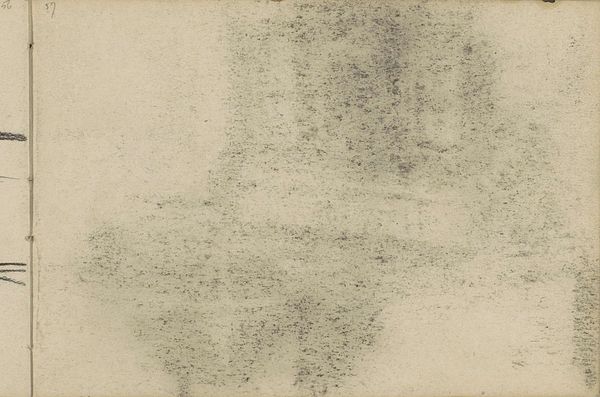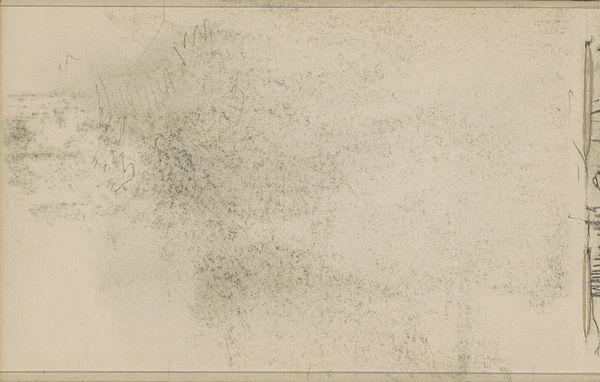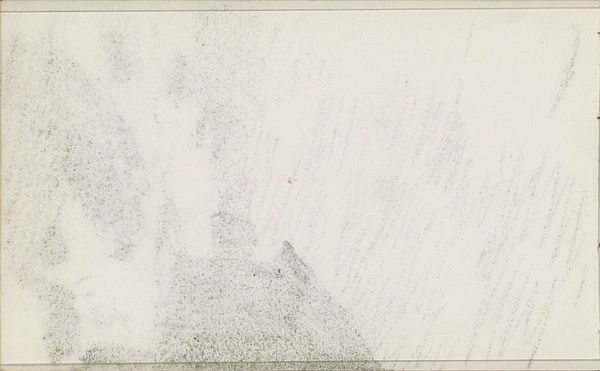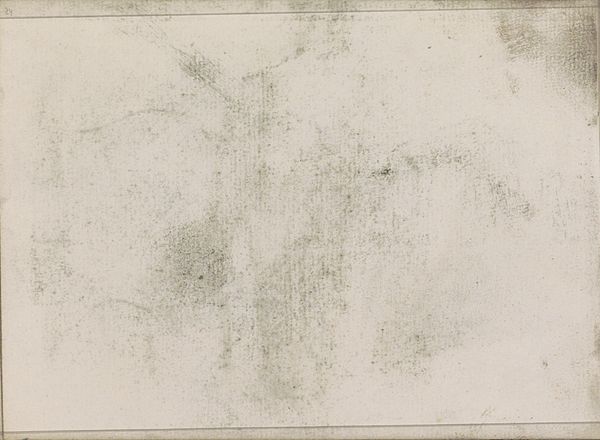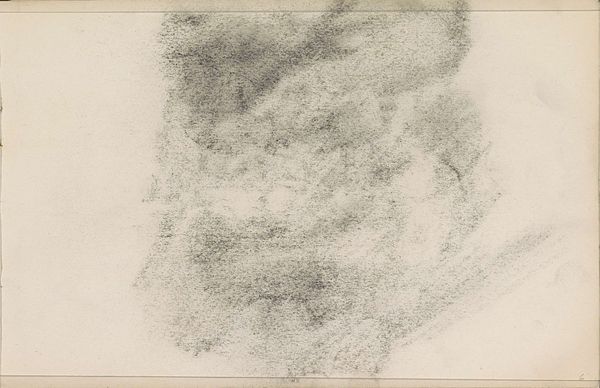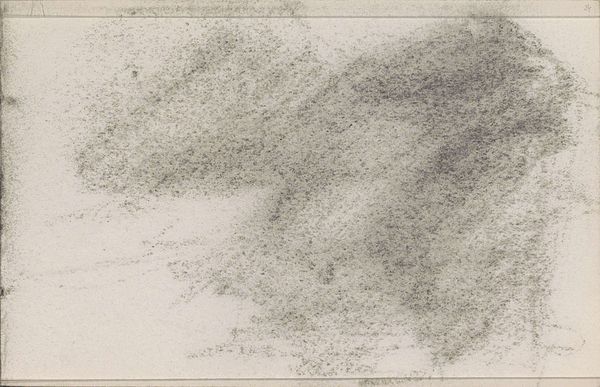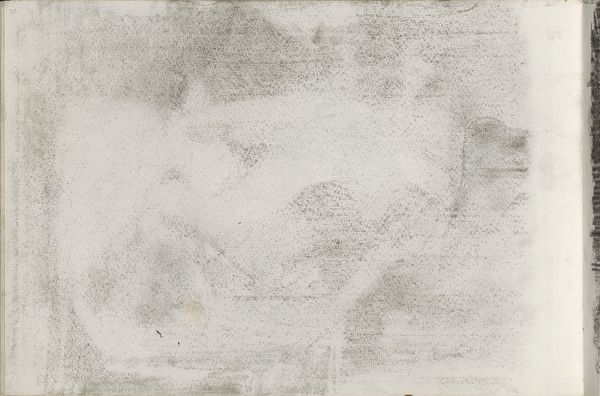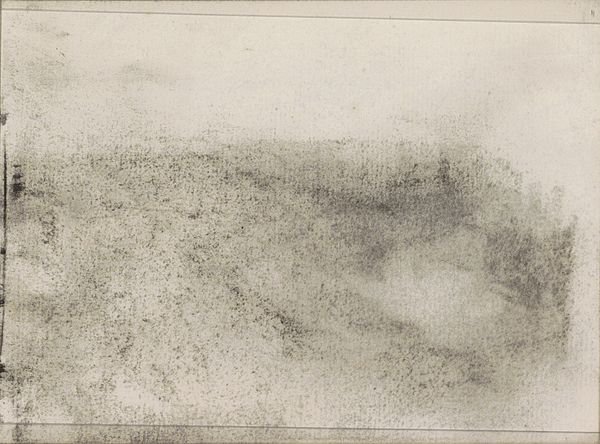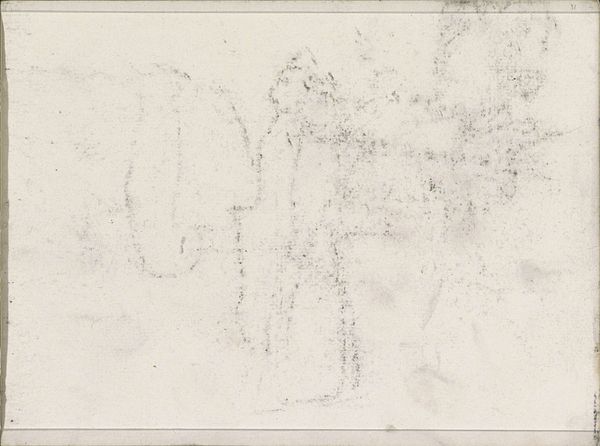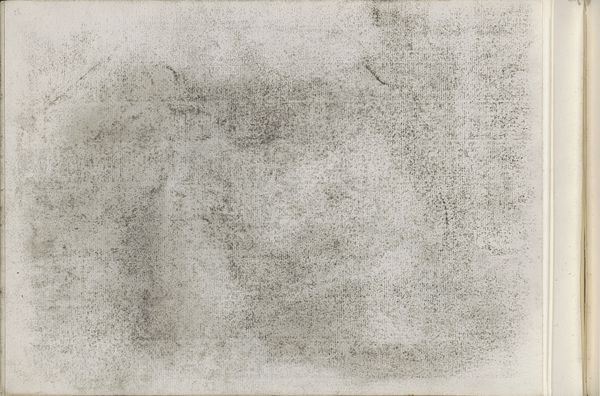
drawing, paper, pencil, graphite
#
drawing
#
pencil sketch
#
paper
#
abstract
#
pencil
#
graphite
#
watercolor
Copyright: Rijks Museum: Open Domain
Curator: Looking at this piece, I find myself captivated by its ethereal quality. Editor: Ethereal, certainly. This subtle work, currently held in the Rijksmuseum, is entitled "Abklatsch van de krijttekening op blad 6 verso," a graphite drawing by Willem Witsen, dating from around 1915-1920. What exactly provokes that feeling in you? Curator: There's a vulnerability to its delicate abstraction that resonates with our contemporary awareness of ephemerality, a constant questioning of materiality and being. The traces almost seem to evoke landscapes while at the same time undermining any sort of figurative reading. Editor: Considering the sociopolitical environment of the early 20th century, and Witsen’s engagement within artistic circles, one can speculate how world events might have filtered into his approach to landscapes in particular. Think about the first world war... Curator: Exactly! These ‘blotches’ resist traditional artistic narratives, challenging systems that privilege dominant perspectives and embracing the deconstruction of traditional representation. One might see this 'Abklatsch' as embodying the very act of challenging institutional power. What do you think it suggests about Witsen's position as an artist engaging with social realities? Editor: I'd be careful not to reduce art so straightforwardly. Perhaps instead Witsen’s social circles influenced his experimentation and technical approach to art. Maybe it's as simple as that he embraced contemporary aesthetic trends... Curator: But art isn't created in a vacuum! The intersections of gender, class, and social upheaval directly affect artistic expression and how audiences perceive and interpret art. Editor: Indeed. What strikes me about Witsen’s choice of medium is how common pencil and paper were at the time. Witsen would likely have intended this “reproduction of a chalk drawing” as something to circulate and share widely with colleagues for purposes such as knowledge transfer, technique sharing, or artistic inspiration. Curator: This is why exploring the multilayered meaning of Witsen’s choice can help us unpack deeply entrenched beliefs about the very nature of art and power. Editor: I see your point. Examining an artwork with social contexts in mind, such as this drawing, enriches and changes our perception of the history of art itself.
Comments
No comments
Be the first to comment and join the conversation on the ultimate creative platform.
